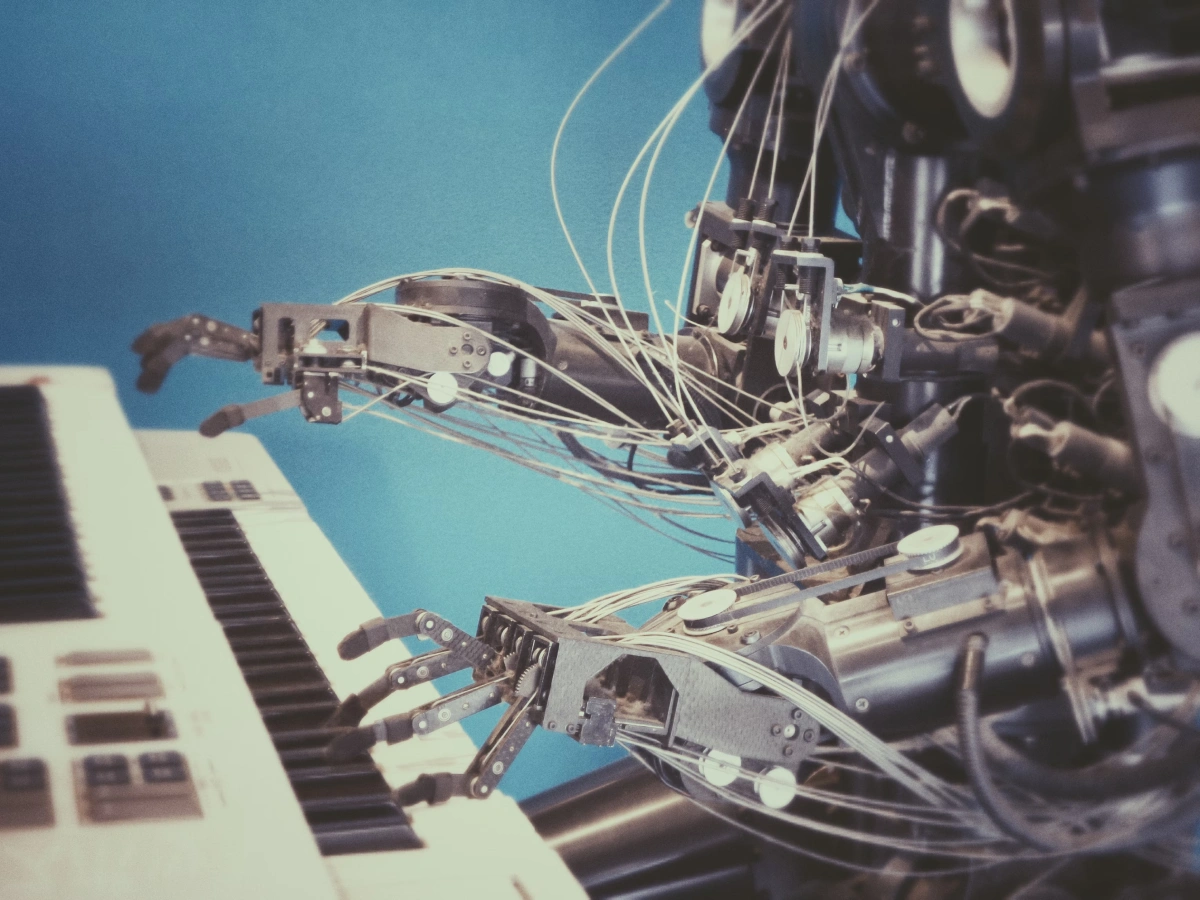It was supposed to set a new benchmark and put legal constraints on artificial intelligence for the first time. However, the European Union’s Artificial Intelligence Act is burdened the fact that it deals with a technology that feels like it is evolving by the hour. Consequently, much of it is subject to interpretation, and it is often unclear what is currently permitted by law or not. Here is how companies can stay on the safe side when it comes to translations.
After the initial enthusiasm subsided, latent disappointment set in. When the first AI systems became available to everyone, expectations (and fears) grew rapidly. However, as the gamification and wow effect began to fade, the limits of artificial intelligence became apparent. This was very evident in translation apps as well as all other application areas that are not purely about increasing efficiency.
Widespread AI systems such as DeepL or Google Translator undoubtedly deliver impressive results. However, anyone who frequently deals with purely machine-generated or translated texts usually recognizes them right away. Even if you can’t always pin it down to a specific aspect, texts that technically meet all the semantic requirements usually display stylistic peculiarities that make it obvious that the text was AI-generated.
Scenarios when AI systems require human intervention
For some types of text, it is clear to every company that they require human translation. Whenever a mistranslation threatens legal, medical, or economic harm, relying exclusively on machine translation without human post-editing remains taboo, especially when it comes to contracts, financial reports, general terms and conditions, or patent specifications; possibly even instructions for use and manuals.
Conversely, texts such as internal emails or foreign-language feedback on social media are not as consequential. Sending or receiving messages with simple content does not necessarily always need to be handled by human translators. The area in between is intriguing. An increasingly popular solution for text types that are neither particularly sensitive nor trivial is MTPE, the combined use of machine translation and human post-editing.
The new EU law is tackling this volatile situation. The regulation does not explicitly deal with the translation of texts, but has potential implications for it.
What does the Artificial Intelligence Act regulate?
The AI Act does not deal with every type of artificial intelligence. Instead, it defines various risk categories. At the top of the list are AI systems whose risk is classified as unacceptable, especially those that seek to manipulate or track human behavior, such as social scoring. Apps with this classification are banned under the regulation. At the other end of the scale in this risk-based approach are AI systems that are classified as risk-free, which are basically most of the applications that have already become commonplace.
Everything in between is covered by the regulation. These are applications for general purposes that are permitted but whose use entails risks. It can range from applications with minimal risk to high-risk AI systems. The AI Act was enforced in August 2024, but most of the regulations will not become effective until August 2, 2026.
AI and risk: The liability gap of the EU AI Act
AI applications for translation could fall into this category, but there are other things to consider. This is because the intended purpose of DeepL and similar applications is definitely not illegal. Correspondingly, any use of AI systems pursuant to their general intended purpose is legal according to the regulation and does not affect any of the liability issues defined in the AI Act.
The fact that liability issues are not regulated in the regulation is an obvious shortcoming. The gap should be closed by the AI Liability Directive. This directive was prepared for a long time and was intended to find ways of dealing with liability under civil law. However, it was buried in February 2025, because legislators and member states were unable to agree on common verbiage.
But then who is liable if a text translated by artificial intelligence (for example, a financial report) causes damage? It will be interesting to see when the first case of this nature is decided.
Does the AI Regulation require companies to disclose the use of artificial intelligence?
The area of disclosing AI use seems somewhat less sensitive. Although, generally speaking, transparency is one of the requirements of the AI Act, it does not explicitly demand that purely machine-translated texts be labeled as such. It merely describes it as “indicated” in terms of transparency if no “human review or editorial audit” has taken place as a second step. Therefore, there is no real transparency obligation in this respect.
For companies, this means combining the issues of liability and disclosure ultimately leads to MTPE. The combination of machine translation and post-editing makes disclosing AI use unnecessary and it clarifies the question of liability: If a professional translation service provider has checked and revised a machine-translated text, the principal is relieved of liability for damage caused by mistranslation, regardless of the circumstances. Considering the legal loopholes in European legislation that are expected to be closed sooner or later, this is a procedure that is highly recommended, at least prophylactically.
MTPE: When AI systems and humans work together
But how does MTPE actually work? The translation service provider produces the first version with the help of one of the common apps. Licensed versions are used, which means that the texts are not used for teaching the AI. This ensures that company data stays where it is intended.
At the same time, a translation memory is used. This database is created specifically for the client. It stores previously checked translations of text segments and small syntactic units. The AI then only translates sections that do not exist in the translation memory, which ensures consistency of the translation and uniform application of technical terms.
In the second step, professional native speakers take over. They check and revise the machine-generated version and ensure that the quality of the translation is indistinguishable from a human translation.
Areas where AI systems and humans harmonize particularly well
There are some typical types of text that absolutely require human post-editing after using AI:
- High-quality customer content: to ensure a professional, responsible image and customer satisfaction
- Legal texts, contracts, agreements: to ensure compliance with legal accuracy and binding nature
- Marketing materials: to accurately convey cultural nuances and brand messages
- Technical documentation and instructions: to ensure the safety and correct operation of devices
- Product information: to ensure safety and manageability
- Corporate documents: to ensure the correct use of technical terminology
- Localization projects: to make cultural adaptations and take local customs into account
- Medical documents: to avoid errors that can have health-related and legal consequences
- Academic texts: to uphold technical accuracy and scientific integrity
For many companies, MTPE has several advantages over machine or human-only translation.
- Cost: Human translations are not cheap, but AI translations are often not good enough in terms of quality. Machine translation with post-editing offers the perfect middle ground.
- Time: Excellent translations take time. If AI models take over the first step, the processing time is significantly reduced.
- Quality: AI systems are still far from meeting the quality delivered by human translators. However, MTPE raises machine translations to an acceptable level for principals.
- Flexibility: With MTPE, there is a third option alongside machine and human translation. Companies can choose between them flexibly and at short notice, depending on their needs.
- Consistency: Translation memories speed up the translation process. They make it possible to avoid redundant changes to the AI output. The translation memory also ensures consistency.
- Expertise: The expertise of AI systems is clear. Good translation service providers not only employ professional native speakers, but also people with subject-specific expertise who possess the corresponding terminology.
Before and after the EU AI Act: The safe path to compliance
The implementation of MTPE procedures and their proper documentation also ensure compliance with the regulatory requirements of the EU AI Act and all its amendments (and new AI systems) that are expected in the coming years.
The consideration of using artificial intelligence should not only focus on the stunning fines that the AI Act stipulates as a maximum penalty for breaches of the regulations (up to 35 million euros or 7 percent of annual global revenues). Companies should also consider the reputational damage that could be caused by poor translations, which should be reason enough not to rely solely on the use of AI when quality really matters.
Download our white paper now: “How to accomplish perfect translations in the AI age”.
You can find the complete English version of the AI Act here. The AI Act Explorer also offers special search and exploration functions in the specifications of the AI Act.






